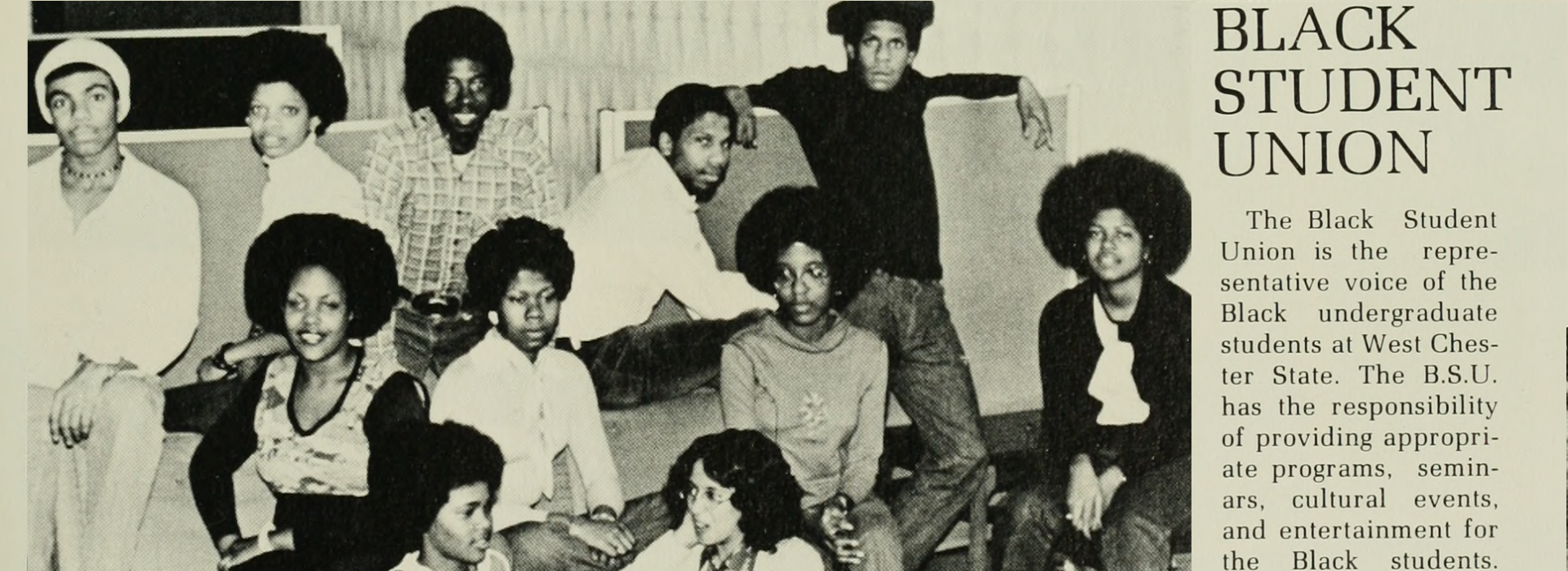This first short project asks you to develop and publish work that places into conversation items you’ve located (in your weekly research or new for this project) that support your critical reflection on the experiences of black college students. Your goal for this publication is (a) to store, generate, and preserve knowledge about the multiple experiences of black college students, and (b) to use this knowledge-building and public sharing as a catalyst for transformation.
Requirements
Using Omeka software, you will produce an exhibit comprised of items you’ve selected. Via words, images, and media, you’ll curate a memory architecture, unearth history/anti-history, or examine an unlived element. Your work will be graded on product and process, design and content.
- Propose a topic for Project One (see details below). Your must propose a topic for your first project that includes at least 3 relevant artifacts by class time on 2/10. (5%)
- Conference for Topic Proposal. You must conference on your proposed topic between 2/6 and 2/12. (5%)
- Initial Draft of Project One Exhibit (see details below). You must have a draft ready for review by class time on 2/17. Your draft must have at least 3 artifacts with an interpretive thread that relates those artifacts for the viewer. 300 words. (5%)
- First Conference for Draft. You must conference on your draft between 2/17 and 2/21. (5%)
- Peer Review (see details below). You must peer review 2 other drafts by 2/23. (5%)
- Revised and Extended Draft: You must have a revised draft ready for review by class time on 2/24. Your draft must have at least 5 artifacts with the interpretive thread made explicit for the viewer. (5%)
- Revised and Extended Draft Conference: You must meet with MB or RC between 2/24 and 2/27 and discuss your exhibit. (5%)
- Final submission. Your project must be live and ready for review by 11:59pm on 3/1. (60%)
- Curator’s Statement. Your curator’s statement is due 24 hours after your exhibit is due. (5%)
Proposal
Your proposal should exist as a google doc in the shared folder. Your proposal should identify a specific title and topic for the exhibit, using a paragraph to expand on that topic. List 3 items with links in our shared archive.
Initial Draft
Build your draft in Omeka as an exhibit. Log into our site at http://blackstudentslives.org/archives/admin and click Exhibits from the left column. Add an Exhibit, taking care to carefully chose a title. Your draft must use at least 3 artifacts and 300 words to present the connections between those items. By the deadline (11:59pm on 2/21) you must list your exhibit as a url in the shared document, “Drafts for Project 1” in our shared folder.
Peer Review
You will peer review 2 drafts for project one. Your peer review, at a minimum, should contain at least one positive supporting claim, one critical claim of something that needs addressing, and one suggestion for adding to the project. Sign up for the project you intend to review on the spreadsheet “Drafts for Project 1“. Each project can have no more than 2 reviewers. Peer review is due by 11:59pm on 2/23.
Revised Draft
Your revised draft must use at least 5 artifacts and 500 words to present the connections between those items by the time of your revised draft conference (2/24 to 2/27).
Conference
You must conference with us three times (proposal, initial draft, revised draft) but you may meet with us as often as you wish in order to receive help, feedback, and support. Schedule a conference with Dr. Burns at http://meetme.so/mburns2 and with Dr. Cream at http://meetme.so/rcream
Examples for Exhibits
Time Frame: For your first exhibit, limit your selection to the 1960s and 1970s. Scope: Pick something small, so you can build an interpretive thread in 5-15 items. We strongly suggest a person, a single event, a thread of a manageable size. If you’re lost and unsure, a great project would identify a Black WCU student and present artifacts from their time at WCU, thereby documenting important aspects of their experience at West Chester. Small events can also make a good short project– a dance, a basketball game, etc. Strong exhibits can be made by presenting seemingly historically singular occurrences– individual students, small organizations, singular events– against a backdrop of other isolated events in order to connect the disconnected. A limited focus can help the interpretive experience more than a diffuse, broad focus. Questions? Ask one of your instructors for help.
Curator’s Statement
Your curator’s statement should offer some reflection on the process of making your exhibit, as well as imagine potential directions to continue your research on the topic. You should include it as an additional page to your exhibit.
In about 200-350 words, offers some thoughts on how you did what you did and why you did what you did. As well, reflect on your experiences, difficulties, challenges, and successes.
Your curator’s statement is due Monday night (3/2) by 11:59pm.
Help building an Exhibit in Omeka
New to Omeka? That’s cool. There’s a ton of tutorials on exhibit building in Omeka. Like video tutorials? Youtube is your friend. Prefer web docs and walk throughs? Here’s a few we like
Guide to Creating Omeka Exhibits Guide to planning an Omeka exhibit by The Albert M. Greenfield Digital Center for The History of Women’s Education
“Creating an Omeka Exhibit” Miriam Posner’s Step by step intro instructions for building an Omeka Exhibit
Omeka for Millenials Lily Beauvillier’s Introductory guide to Omeka for millenials. She uses Gollum from LOTR as an example. The exhibit stuff is at the end.
